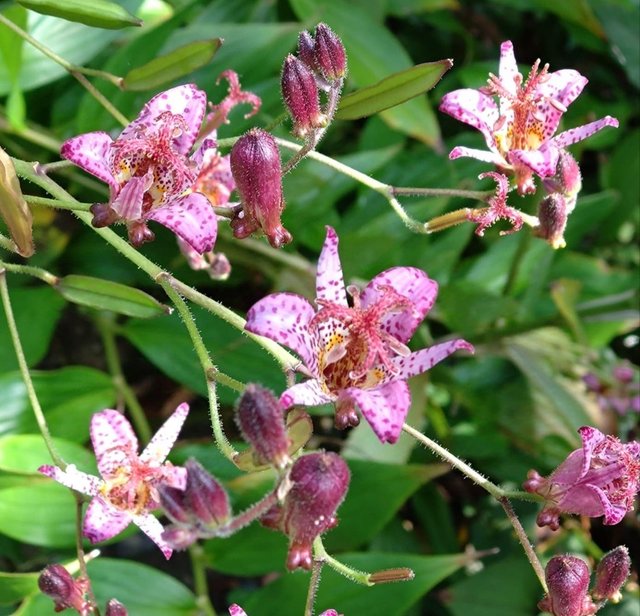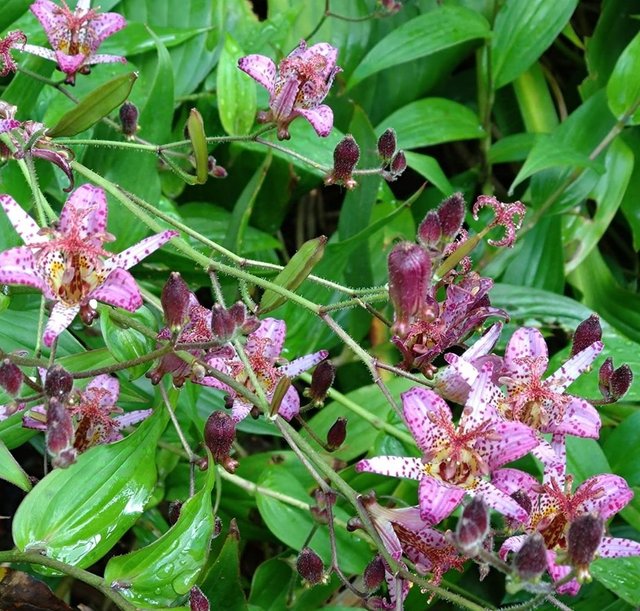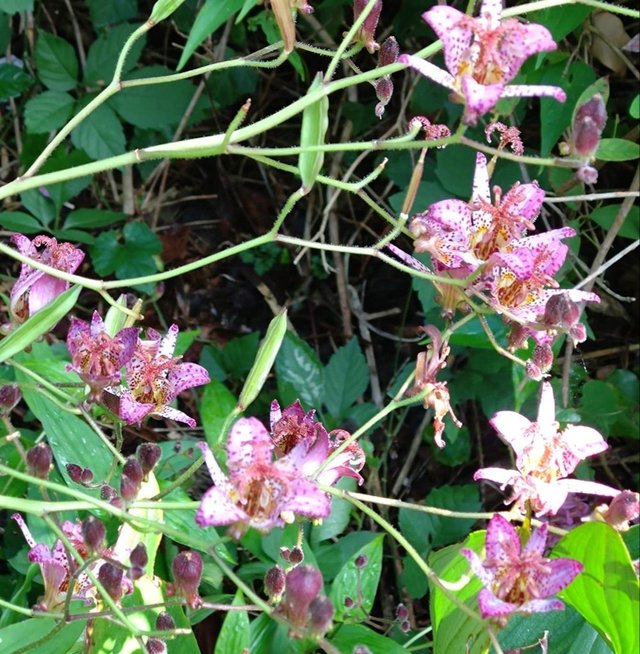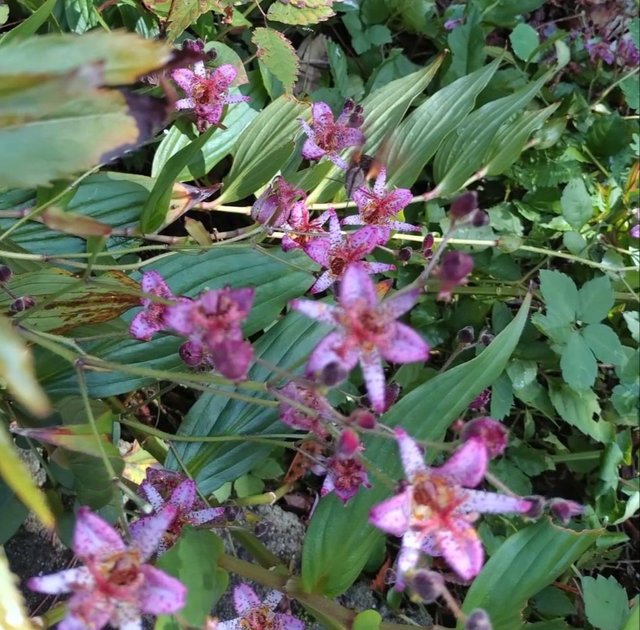Beautiful Colour Japanese Toad Lily Flower
Japanese toad lilies, scientifically known as Tricyrtis hirta, are remarkable perennials native to Japan and other parts of East Asia. They are valued not only for their unique beauty but also for their late-season bloom, providing delicate flowers in shades of purple, pink, and white well into autumn, long after many other flowering plants have faded. Often compared to orchids due to their intricate blossoms, toad lilies are a wonderful addition to any shaded garden, offering an exotic touch to woodland and shade gardens.
Characteristics and Appearance
Japanese toad lilies have arching, hairy stems and lush, lance-shaped leaves with a velvety texture. The leaves, which grow along the stem, are often spotted or marked, giving them additional visual interest. The most captivating aspect, however, is the flower itself. Each bloom is star-shaped, with six delicate petals. The petals are often dotted with specks in contrasting colors, usually purples or blues, which create a mesmerizing, almost otherworldly look. These spots give rise to the “toad” part of their name, as they resemble the mottled patterns seen on toads. Despite this peculiar name, Japanese toad lilies are far from unattractive; they’re celebrated for their exotic, orchid-like appearance that stands out in any landscape.
Ideal Growing Conditions
Japanese toad lilies thrive in cool, moist, and partially shaded environments, much like their natural woodland habitats. Here’s what to keep in mind for growing them:
Light: Partial to full shade is ideal. They do well in dappled sunlight or areas where they’re shaded during the hottest part of the day.
Soil: They prefer rich, well-draining, and slightly acidic soil. It’s helpful to amend the soil with organic material like compost or peat moss to improve moisture retention and provide essential nutrients.
Watering: These plants require consistently moist soil, especially in warmer weather. However, waterlogging can be detrimental, so ensure the soil is damp but not waterlogged.
Temperature: Japanese toad lilies are hardy in USDA zones 4 through 8, which means they can tolerate cold winter temperatures but may struggle in intense heat. Mulching around the plants helps to retain moisture and regulate temperature.
Bloom Time and Maintenance.




